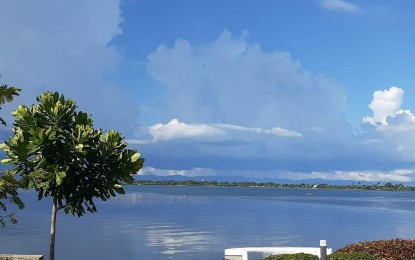Makalipas ang halos 5 taon, Eastern Visayas red tide-free na ngayon


Iniulat ng Bureau of Fisheries and Aquatic Resources (BFAR), na makaraan ang halos limang taon, lahat ng look (bay) sa Eastern Visayas ay red tide-free na.
Batay sa mga resulta ng laboratory tests nitong Lunes ng gabi, wala nang mga organismo ng red tide sa pitong look (bay), sanhi para ganap nang maging red tide-free ang rehiyon.
Ayon kay BFAR Eastern Visayas Regional Director Juan Albaladejo . . . “After almost five years of regular issuance of red tide advisories, we’re now finally red tide-free. Hopefully, we will have a longer period like this with the interplay of weather. We need this for us to have a good harvest of shellfish products.”
Ang huling pagkakataon na ang rehiyon ay naging red tide-free ay noong June 9, 2017. Simula noong hanggang kahapon, February 7, ang BFAR ay nagpapatupad ng shellfish ban sa ilang lugar.
Ang huling pitong look (bays) na ngayon ay cleared na mula sa red tide toxins ay ang San Pedro Bay sa Basey, Samar; coastal waters ng Leyte, Leyte; Carigara Bay sa Capoocan, Carigara, Barugo, San Miguel, at Babatngon sa Leyte; Cancabato Bay sa Tacloban City; coastal waters ng Guiuan, Eastern Samar; Matarinao Bay sa General MacArthur, Hernani, Quinapondan, at Salcedo sa Eastern Samar; at coastal waters ng Biliran Island.
Simula noong 2017, regular nang nagkakaroon ng red tide toxins sa Matarinao Bay, Carigara Bay, at Cancabato Bay.
Ayon kay Albaladejo . . . “Even if shellfish ban is lifted in these areas, our active surveillance will continue since we are still experiencing rains. This may cause runoff of soil sediments rich in organic load that fertilized the cyst of red tide in these bays.”
Regular na nagsasagawa ng pag-analisa ang BFAR sa water samples sa pamamagitan ng kanilang regional laboratory, para matiyak na ang mga shellfish na nakukuha mula sa mga nabanggit na lugar ay ligtas para sa human consumption.
Kapag nagpositibo sa red tide ang tubig, ay kumukuha sila ng sample ng shellfish at ipinadadala ito sa national laboratory para sa thorough analysis.
Ang red tide ang terminong ginagamit para ilarawan ang isang pangyayari, kung saan ang tubig ay nag-iiba ang kulay sanhi ng high algal biomass o konsentrasyon ng algae.







